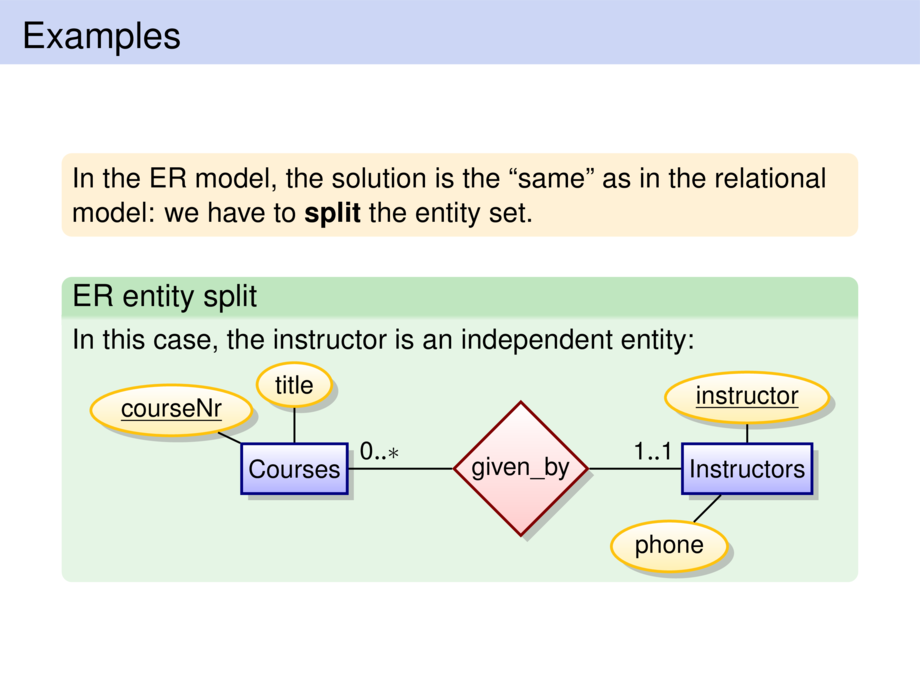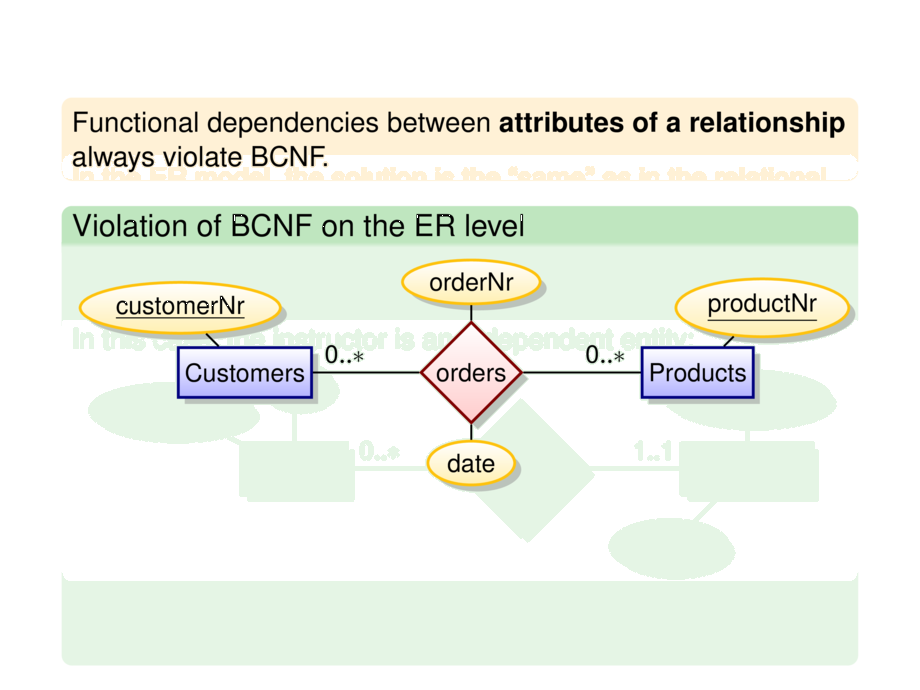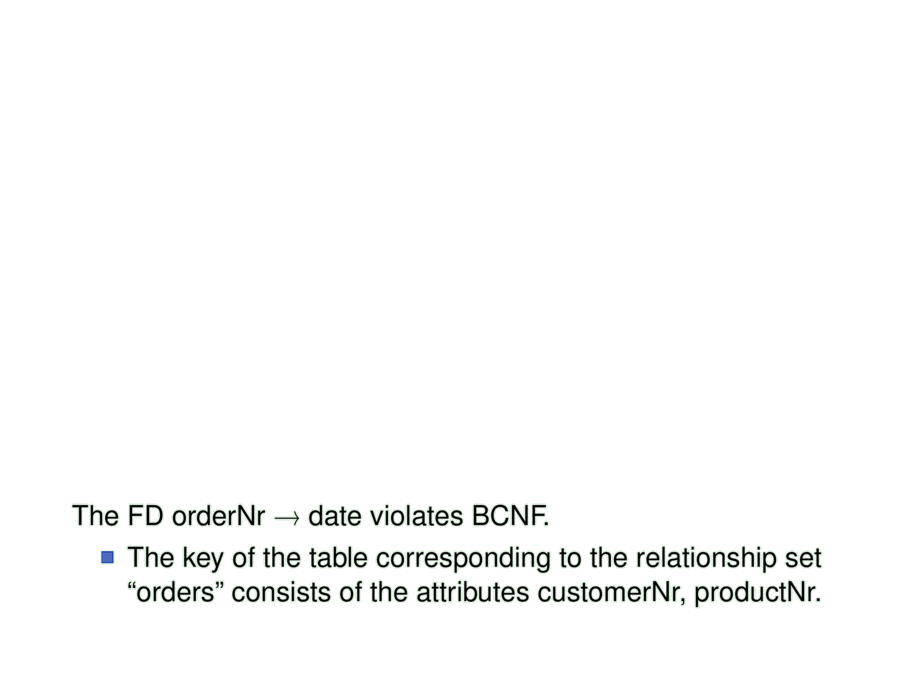



































































































270/291
\begin{frame}
\frametitle{Examples}
\begin{goal}{}
Functional dependencies between \emph{attributes of a relationship} always violate BCNF.
\end{goal}
\begin{exampleblock}{Violation of BCNF on the ER level}
\begin{tcenter}
\scalebox{.9}{
\begin{tikzpicture}[every edge/.style={link}]
\node[entity] (customer) {Customers};
\node[entity,xshift=70mm] (product) {Products};
\node[attribute] [at=(customer),shift={(-1cm,1cm)}] {\key{customerNr}} edge (customer);
\node[attribute] [at=(product),shift={(1cm,1cm)}] {\key{productNr}} edge (product);
\node[relationship] at($(customer)!.5!(product)$) (order) {orders}
edge node [pos=.7,above] {$0..*$} (customer)
edge node [pos=.7,above] {$0..*$} (product);
\node[attribute] [at=(order),shift={(0cm,1.4cm)}] {orderNr} edge (order);
\node[attribute] [at=(order),shift={(0cm,-1.4cm)}] {date} edge (order);
\end{tikzpicture}
}
\end{tcenter}
\pause
The FD $\text{orderNr} \to \text{date}$ violates BCNF.
\begin{itemize}
\item
The key of the table corresponding to the relationship set
``orders'' consists of the attributes customerNr, productNr.
\end{itemize}
\pause
\smallskip
This shows that the concept ``order'' is an independent entity.
\end{exampleblock}
\end{frame}

